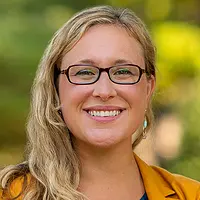Insights
Why Is Chlormequat In My Oatmeal and Cereal?

Recent news headlines have focused on chlormequat in our food. What is chlormequat and why is it used? Chlormequat is a chemical that regulates the size and growth of plants, especially in crops like wheat, barley, oats, and fruit trees. It is a plant growth regulator, which means it changes how plants grow and develop instead of directly dealing with pests or diseases like pesticides. It can be useful in farming because it lowers the chance crops will bend over and make harvesting more difficult. In the U.S., the chemical is only allowed to be used on ornamental plants. In 2018, the U.S. Environmental Protection Agency (EPA) permitted grain imports that used chlormequat.
Why Is Chlormequat Showing Up in Our Food?
The peer-reviewed study notes some key findings:
- Some chlormequat was found in U.S. human urine samples from 2017-2022
- In 2023, an increase in chlormequat was found in U.S. urine samples, particularly in oat-based foods
- Organic products were less likely to contain the chemical, as were wheat products.
It looks like the increase of this chemical in our food supply and bodies is from imported grains being used in foods we pull off the shelf in our American grocery stores. Because there is no standard U.S. monitoring of this chemical, it was not apparent until this study brought attention to it.
Oats undergo various processing steps after they are harvested, before they become part of your breakfast. Processing steps may include cleaning, milling, and sometimes fortifying raw oats with extra vitamins and minerals. There may be some chlormequat residues left in the final product, even though steps are taken to reduce them, especially if it was applied during growing.
Is Chlormequat Bad For Our Health?
Regulatory agencies set limits for chemical residues in food products. The urine concentrations in the study are below current U.S. and European Food Safety Authority benchmark values, although it can understandably feel uncomfortable to purchase and eat foods with chemicals in them that are not designed for consumption.
What Can Consumers Do About Contaminants in Food?
We often hear that we as consumers can show with our wallets what we want to consume. However, making it the responsibility of every person to read and understand potential food risks is impossible when products don’t list contaminant facts next to nutritional facts on the label. There also is not a domestic contaminant testing program that covers all possible food contaminants. For the time being, organic grain products were less likely to show detectable levels of chlormequat so, while it’s not always available or within someone’s budget, it could be beneficial to purchase organic foods if possible. Additionally, farmers, manufacturers, suppliers, food distributors, and retail chains should limit the use of chlormequat in the planting, harvesting, processing, and supply chain systems.
Preventing Chemical Contaminants in the Future
The illuminating aspect for us is the fact that chlormequat in oat-based products was tangentially found by a voluntary research study, which sheds light on the fragility of our food system when it comes to chemical contaminants. How do we prevent this in the future? One approach is to continue refining agricultural practices to minimize the need for chemical interventions like chlormequat. This includes promoting sustainable farming methods and ongoing research for safer farming practices. This might involve breeding crop varieties that are naturally more resistant to stressors like bending over or exploring innovative techniques like precision agriculture to optimize harvesting.
Bridging Science and Policy for Public Health
At RTI, we continue to work with multisectoral partners to help bridge the gap between science and policy to improve the human condition. Part of our mission is to communicate risks to the community as emerging contaminants make the news, leverage awareness, and more comprehensively evaluate potential environmental health risks.
To truly protect public health, there must be a framework for chemical usage in the U.S. that more proactively evaluates the risk of chemical usage and implements a monitoring plan before there is approval to add yet another chemical into the mouths of Americans eating breakfast. For that, we could look to the European Union’s precautionary principle approach and evaluate the differing views on how they could be applied. Until then, we continue to tackle emerging chemical contaminants that are identified from farm to fork in a nonlinear game of theoretical whack-a-mole.
Learn more about RTI’s work in food safety.
Disclaimer: This piece was written by Jennifer Hoponick Redmon (Senior Director, Environmental Health and Water Quality), Imari Walker-Franklin (Research Chemist), and Jamie Pero Parker (Innovation Advisor) to share perspectives on a topic of interest. Expression of opinions within are those of the author or authors.


